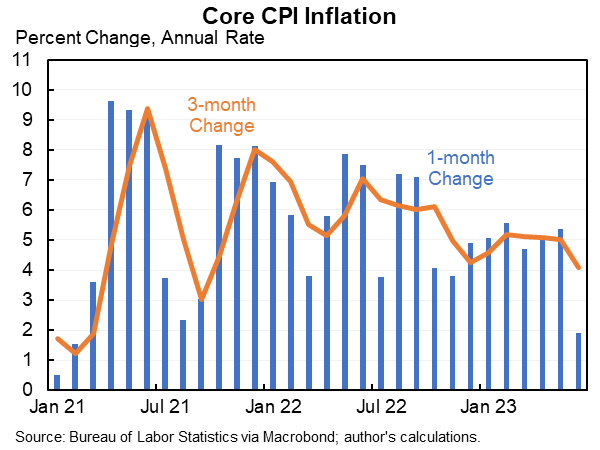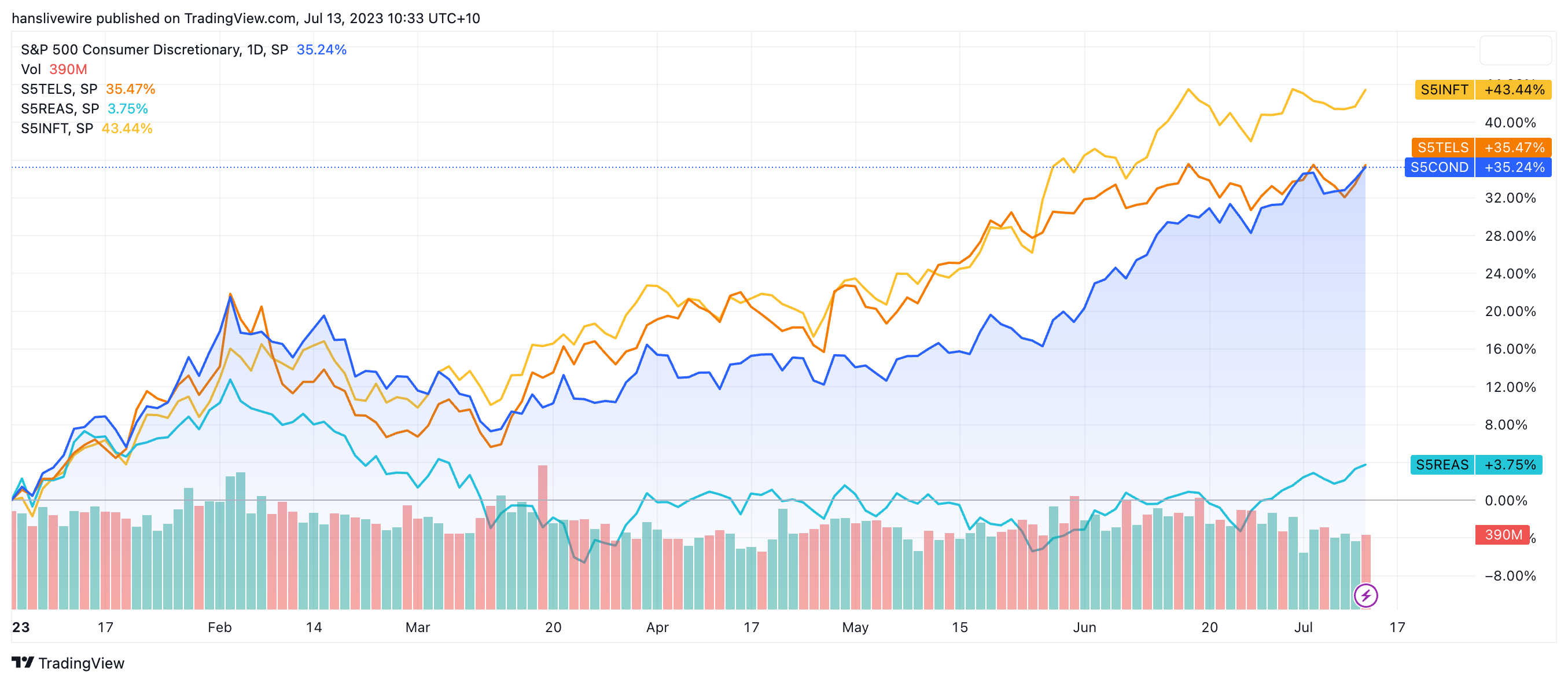Why this strategist is avoiding small caps (and what he would buy instead)
CFRA chief investment strategist Sam Stovall is different. He uses a combination of fundamental, technical, and historical analyses to determine where markets are heading and the stocks that can outperform.
Stovall didn't believe the consensus and market pricing has rewarded him and his team.
Recently, I interviewed Stovall to find out where he is seeing those opportunities now and how he's updated his market forecasts since we last spoke six months ago.
.png)
Stovall is bullish - but there's a catch
Stovall has a year-end S&P 500 target of 4,575, or approximately only 5% higher than the S&P 500's current levels. Stovall stresses that these targets are more like a "weather vane" than a "laser beam". That is, don't treat the target points as gospel.
But within this target, he points out that the long grind higher is due for a pullback soon.
"I do think that we're due for some sort of digestion of gains," he said.
"History tells us that following that completion of the 20% gain, we tend to continue to advance an average of 14.5% over about a 4.5 month period, so I would tend to say that that's pretty good. We then fall into a 10% decline on average," he noted.
And for those who argue that the market is rallying on low breadth and is still too expensive, Stovall has an answer for that too.
"Historically, we have found a PE multiple expansion averaging 22% from the time that we hit the bear market bottom until the time that we crossed above that 20% threshold. This time around, we were up by 24%, so it's pretty close to the average PE multiple expansion," Stovall said. "Prices lead fundamentals, and so investors are willing to buy in in anticipation of the earnings environment improving," he added.
But what about those rate cuts?
Six months ago, Stovall argued that a rally in US equity markets would come in the second half of 2023. The rally would be driven by the Federal Reserve beginning a rate-cutting cycle. Now that the Federal Reserve has hiked well into the first half of 2023, Stovall says his base case has been "kicked down the road".
"Our belief still is that the Fed will hike in July, but that could very well be the last rate hike of this cycle. Then, traditionally, the Fed tends to cut interest rates an average of nine months after the last rate hike, and we think that'll come true this time as well," he said.
But is the next rate hike the one that will be one too many?
The latest data out of the US demonstrates the world's largest economy is well and truly in disinflation mode. June consumer price inflation rose just 0.2% month-on-month, the smallest monthly increase in two years. At the headline level, that's a 3% increase while at the core level (headline ex-energy and food), the year-on-year change is 4.8%.

The smaller-than-expected increase unleashed a torrent of what Mizuho's Vishnu Varathan has termed "Peak Fed rallies". That is, markets are now more convinced than ever that the Fed is done and that it has done its job without breaking the economy or the stock market.
Stovall shares most of that view.
"The worry, however, is what might it be doing to some banks. I think a lot of banks have already protected themselves by raising the interest rates on deposits, but I think that is probably what causes the inverted yield curve to be as steep as it has been since the early 1980s, and therefore, might cause lending activities to slow even more," he added.
Sector and stock opportunities
Six months ago, Stovall nominated these four sectors as potential outperformers:
- Consumer discretionary
- Communication services
- Real estate
- Big Tech
As this chart will show you, three of those sectors have done very nicely.

He expects the three outperforming sectors (consumer discretionary, communications, and big tech) to continue to do so in the second half.
"What we find is that the three sectors that outperformed in the first half tend to continue to outperform, mainly because your portfolio managers who are already behind the curve by mid-year are going to put the pedal to the metal," Stovall said.
Stovall has also added a fifth sector of interest - US industrials. Within that category, he names several stocks worth looking at:
- Airlines: United Airlines (NYSE: UAL) and Alaska Airlines (NYSE: ALK)
- Construction materials: Martin Marietta (NYSE: MLM)
- Agriculture: Caterpillar (NYSE: CAT) and Deere and Company (NYSE: DE)
And just as it is in Australia, the dividend and high-yield strategy is also one Sam would recommend for those who have investments in the US markets. But he does have some advice for income investors - think like a landlord.
"What you are looking for is a high-quality tenant who will pay their rent on time and has no problem if you raise that rent every year," he quipped.
"Those that have S&P earnings and dividend quality ranks of A-, A, A+, look to those companies that have payout ratios that are well below 80% so that there is a cushion should there be a slump, and focus on those companies that do have the ability not only to pay their dividends but are regarded as dividend aristocrats where they traditionally have increased their dividends every year," he added.
For the ASX Dividend Aristocrats list we compiled earlier this year, you can click here:
.png)
Why Stovall is avoiding small caps
Stovall does have one area of the market that he is not as bullish on. He argues that small-cap stocks have not taken part in most of this rally because technology stocks don't make up a large portion of the US small-cap sector.
"One reason is that technology itself represents 28% of the S&P 500 market cap, but it's less than 14% or less than half technology exposure in the S&P SmallCap 600. Just the fact that the technology group really has been the leader, I think has caused the small caps to be under-performers," he said.
But there is also another reason.
"If the Fed finally pauses, then I think the small and mid-caps will pop, because right now, they are trading at close to a 40% discount on a relative basis to their long-term average, so their PE is 40% below the average difference between themselves and the S&P 500, so at least for the long term, they look very attractive," he noted.
4 topics
6 stocks mentioned

